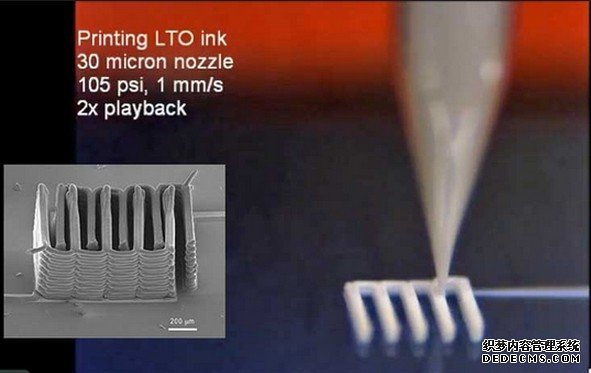Used Batteries Recycle
Release time:2015-07-16 source:未知 click:0
According to the U.S. technology blog Gizmodo reported, although 3D printing can be used for toys and even aircraft engines, but printed shortly before the battery is still very troublesome problem. New ink and tool now makes 3D printing lithium appears more likely.

Technology Review Network (Technology Review) have just seen Harvard University materials scientist Jennifer Lewis results, reported that although the technology is still in its early stages, but it looks like 3D printing batteries will soon be able to meet us. Use Jennifer series. "Functional inks, they can be hardened to a battery and simple components, including clicks, and the antenna conductor" The purpose of the ink material is essentially colloidal suspension of nanoparticles - if Print lithium batteries, printed conductors on the use of silver.
Pressure at room temperature of the extruder ink pushed precisely predetermined position. Ink in the printing process on solidification, and will soon be forming elements, so long as a few minutes to create a simple battery.
It is useful to explain why this Technology Review Network, said: she only print a lithium ion battery 1 mm2 in size but comparable battery performance and commercial, can be processed as a Lewis microstructure, the accuracy up to 100 nm, and the same structure and a larger battery.

Technology Review Network (Technology Review) have just seen Harvard University materials scientist Jennifer Lewis results, reported that although the technology is still in its early stages, but it looks like 3D printing batteries will soon be able to meet us. Use Jennifer series. "Functional inks, they can be hardened to a battery and simple components, including clicks, and the antenna conductor" The purpose of the ink material is essentially colloidal suspension of nanoparticles - if Print lithium batteries, printed conductors on the use of silver.
Pressure at room temperature of the extruder ink pushed precisely predetermined position. Ink in the printing process on solidification, and will soon be forming elements, so long as a few minutes to create a simple battery.
It is useful to explain why this Technology Review Network, said: she only print a lithium ion battery 1 mm2 in size but comparable battery performance and commercial, can be processed as a Lewis microstructure, the accuracy up to 100 nm, and the same structure and a larger battery.


 Selina Chen
Selina Chen
 +86-0755-23200020#8023
+86-0755-23200020#8023
 2702,Unit 1,Tower 1,Zhongsheng Zhidi Mansion,99 Longguan West Road,Gaofeng Community,Dalang Subdistrict,Longhua District,Shenzhen, 518000. PRC.
2702,Unit 1,Tower 1,Zhongsheng Zhidi Mansion,99 Longguan West Road,Gaofeng Community,Dalang Subdistrict,Longhua District,Shenzhen, 518000. PRC.